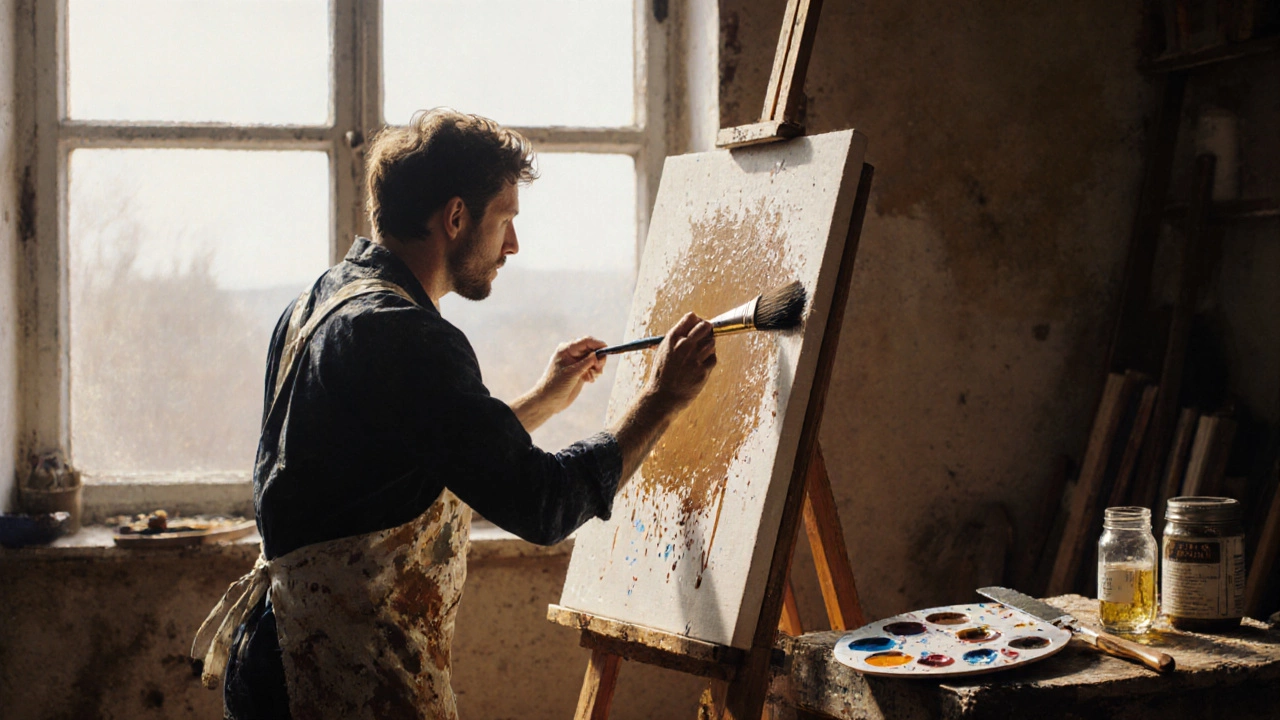Alla Prima Explained: The Direct Wet‑on‑Wet Painting Technique
9 Oct 2025Learn what the alla prima technique is, its history, essential tools, step‑by‑step workflow, pros, cons, and tips for mastering wet‑on‑wet painting.
Continue reading...When working with Alla Prima, a painting method where you apply wet paint directly onto the canvas without waiting for previous layers to dry. Also known as wet‑on‑wet, it lets artists capture light, movement, and emotion in a single session. The approach relies on Oil Paint, pigmented medium that stays workable for hours and the right Painting Medium, additives such as linseed oil or damar that control flow and drying time. Artists often reach for a Palette Knife, a tool that creates texture and bold strokes without brushes to add immediacy. Alla Prima therefore combines speed, spontaneity, and material mastery in one expressive act.
Alla Prima encompasses wet‑on‑wet painting, meaning each brushstroke interacts with the wet layers beneath it. This interaction creates subtle color blending that dry‑on‑dry techniques can’t mimic. Because the paint stays wet, color mixing happens on the canvas, so choices made early influence the final mood. Oil Paint requires a medium to modify drying speed, and selecting the right medium can extend work time or speed up set, letting you adapt on the fly. The Palette Knife adds a tactile dimension—its edge can scrape, spread, or sculpt paint, giving texture that brushes can’t achieve. Together, these elements form a dynamic workflow that rewards confidence and quick decision‑making.
Many painters worry about mistakes, but Alla Prima offers built‑in correction methods. If a hue turns out too dark, you can lift it while still wet or blend a lighter tone over it. The wet surface also allows for scumbling—scrubbing a thin, opaque layer to shift tones without fully covering the underpainting. Understanding how Painting Mediums affect drying lets you plan these fixes: a faster‑drying medium locks in a shape, while a slower one keeps the surface open for adjustments. This flexibility is why portrait painters, landscape artists, and still‑life creators alike gravitate toward the technique.
Composition plays a crucial role, too. The Rule of Thirds, a simple grid that guides placement, works hand‑in‑hand with Alla Prima because you can lay out major forms early and refine details as the paint stays wet. Color harmony, such as complementary palettes, becomes fluid when you mix directly on the canvas; the eye sees the interaction instantly, helping you balance warm and cool tones in real time.
Beyond technical benefits, Alla Prima aligns with a mindset of immediacy. Artists often report a heightened sense of presence, as the canvas captures a momentary feeling rather than a prolonged construction. This mindset translates into stronger emotional impact in the finished work, whether you’re depicting a sunlit field, a bustling street, or a quiet portrait.
The collection below brings together practical guides that dive deeper into every facet mentioned here. You’ll find color‑mixing tips, step‑by‑step fixes for common oil‑painting errors, composition tricks, and real‑world stories from artists who use Alla Prima to keep their work fresh and lively. Browse the articles to see how you can apply these ideas to your own studio practice.

Learn what the alla prima technique is, its history, essential tools, step‑by‑step workflow, pros, cons, and tips for mastering wet‑on‑wet painting.
Continue reading...